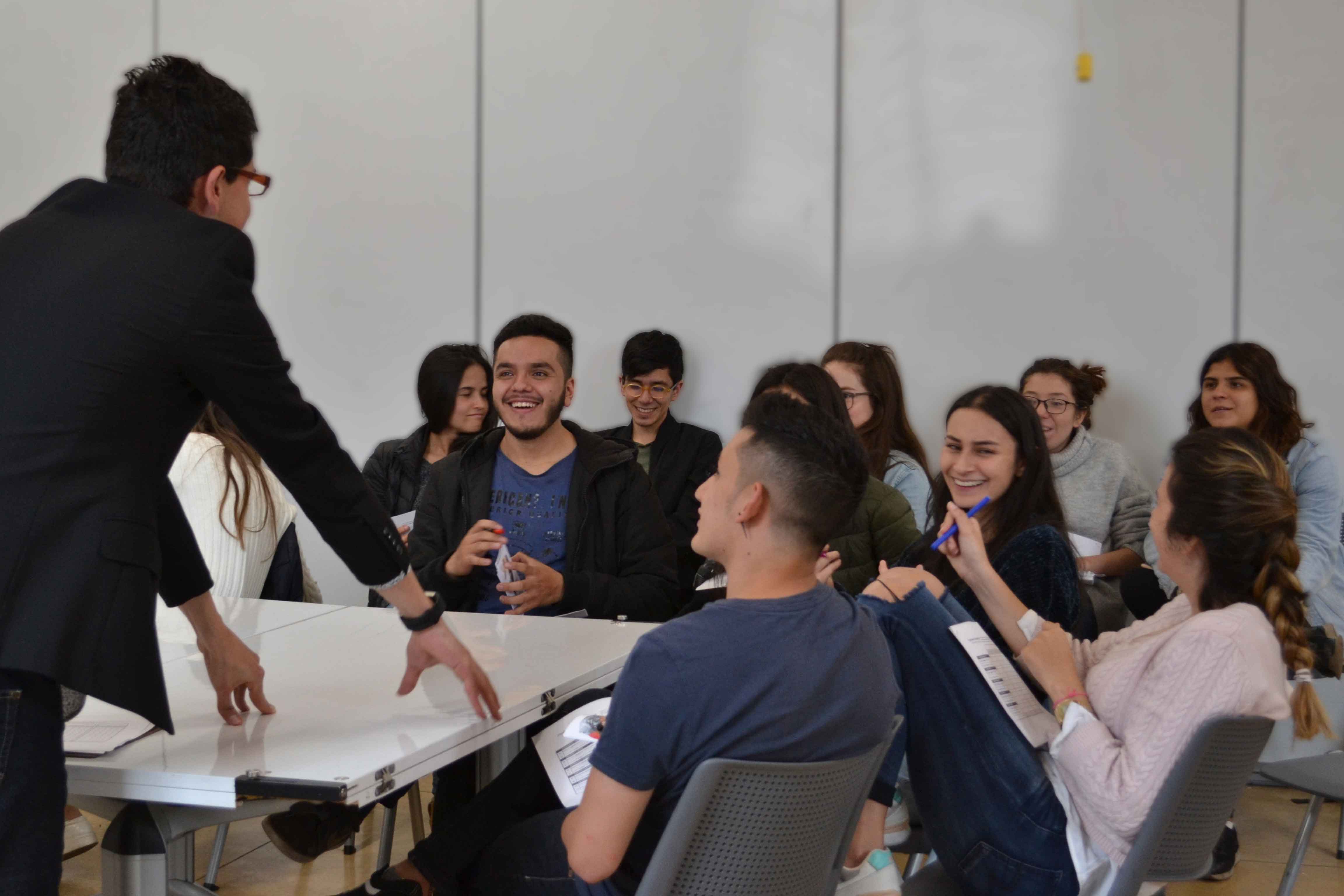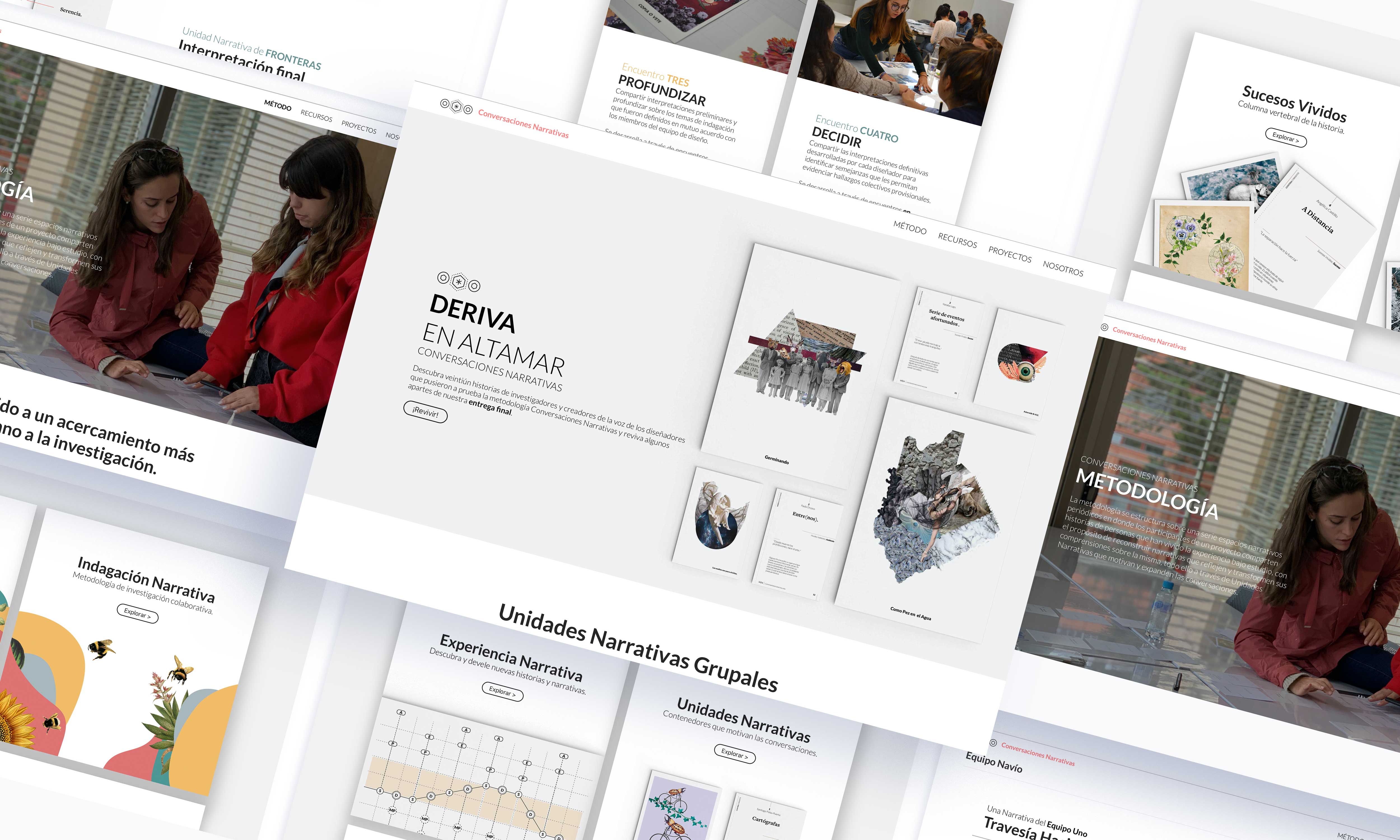NARRATIVE CONVERSATIONS
METHODOLOGY
NARRATIVE CONVERSATIONS
METHODOLOGY
University of the Andes
_Type
Research Project
_Director
Juan Manuel González
_Team
Camilo Rodríguez and Valentina Sierra (Research and creation assistants)
_Web
We understand that humans are storytelling organisms, live storied lives and thus create stories (interpretations) and narratives (understandings) to attribute sense and meaning to our lives, so it becomes the starting point to design from human experiences. In resemblance, it aims to foster significant relationships and interactions within the design teams, improve conversations during the research process in design projects, make thoughts tangible and help us communicate our perspectives.
The methodology is taught in an elective course of the design program of the University of the Andes since the first semester of 2018 to today. I arrived as a Research & Creation Assistant and three of my main task are:
1. Help to prototype, improve the methodology and the way it is being implemented in the course.
2. Assist the elective course and help over 80 students to develop the methodolgy.
3. Design a website and a printed book about the methodology and the results of the project.
THINKING METHODOLOGY
The methodology is structured on a series of narrative spaces where the participants of a project share stories of people who have lived a experience under study, and reconstruct narratives that reflect and transform their understanding of it. The methodology goes through a series of cycles, stages, and meetings that have different purposes.


They explore three dimensions of a history. Allow designer to identify the sequence of critical factors, the extrinsic and intrinsic factors and establish “common grounds” of conversation.
Territories, Horizons and Frontiers are equal in each of the cycles, regulate the process and define particular objectives of each type of conversation carried out during the project.
They are developed within the stages through individual, couple, team or group meetings. They are the mechanism to be able to collect, transform and create interpretations and understandings within each of the cycles.
NARRATIVE UNITS
Allows designers to exteriorize their interpretations that gather a particular understandings of a general situation that detonates, boost and motivates conversations. They seek to promote the exploration, materialization and socialization of human experiences. Created through the union of verbal (proverbs) and visual media (collages).



DESIGN PROCESS
This is one of the best projects in my life because they allow designers to create places where care and trust can be developed. Two years prototyping the methodology were crucial to understand the role of stories and narratives for the human being, so they are a unique way to assign sense and meaning to our events. Furthermore, the project redefines the way we design and approach human experiences. It means that the methodology values the credibility of the stories beyond the truthfulness of the facts. Next, four (04) process pillars:

_Values and Integrity.
Promote spaces where people act in a committed and responsible manner, from a care ethic that values, protects and celebrates human diversity and wealth.

_Knowledge Creation.
Promote meaningful conversations with unknown people and team members. Aforementioned, to create collective knowledge relevant to all.

_Materialize Thought.
Develop resources for verbal and visual communication that aid the exchange of individual interpretations, the consolidation of shared understandings and the strengthening of communicative relationships.

_Design for designers.
Develop a learning space where design students can explore human experiences from a narrative perspective and develop collective understandings through a continuous exchange of individual interpretations.
All the Narrative Units used on this page were created by the students of the Class: Conversaciones: Encuentros en Collage. All rights reserved for their authors.

